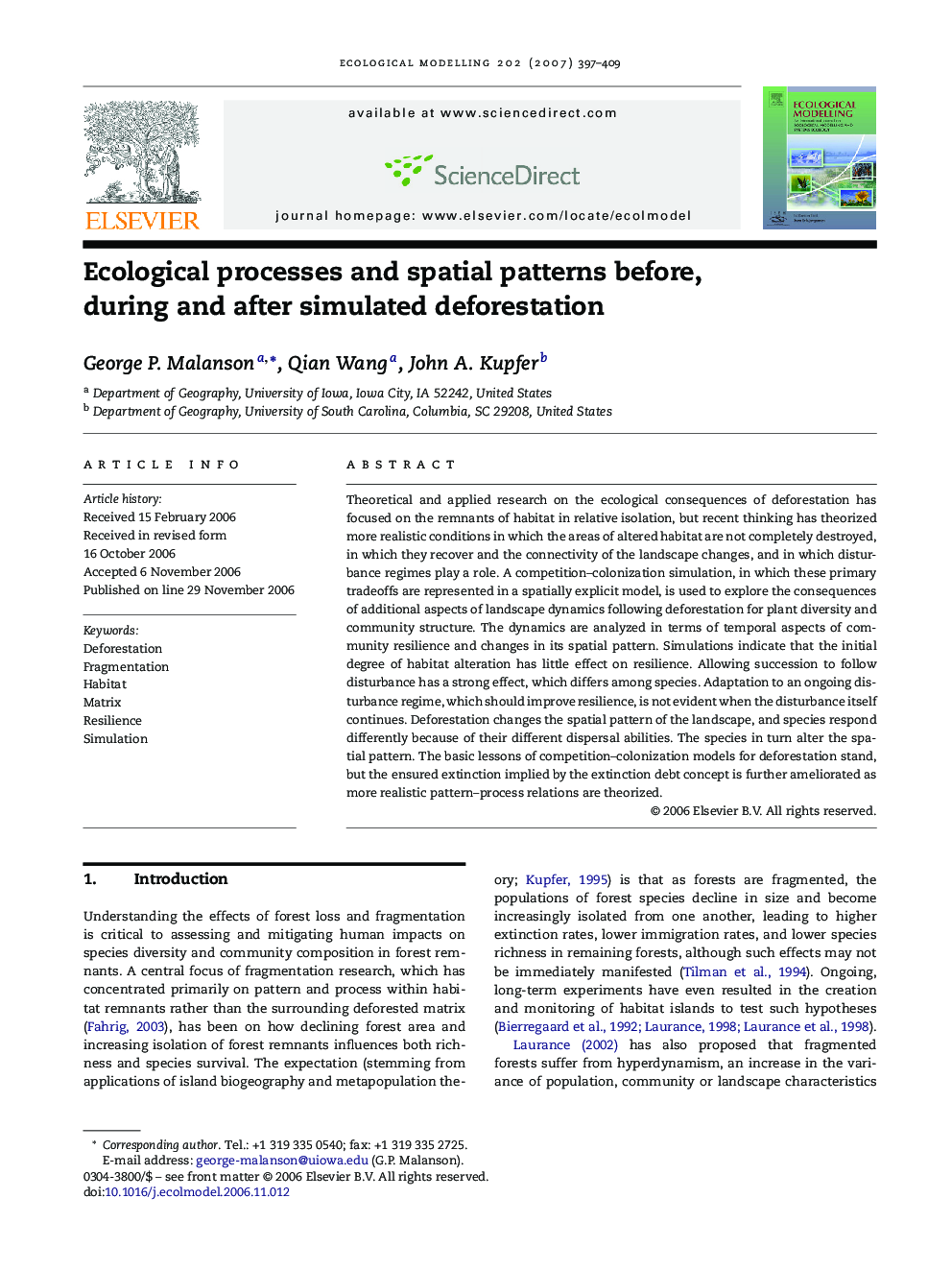| Article ID | Journal | Published Year | Pages | File Type |
|---|---|---|---|---|
| 4378670 | Ecological Modelling | 2007 | 13 Pages |
Theoretical and applied research on the ecological consequences of deforestation has focused on the remnants of habitat in relative isolation, but recent thinking has theorized more realistic conditions in which the areas of altered habitat are not completely destroyed, in which they recover and the connectivity of the landscape changes, and in which disturbance regimes play a role. A competition–colonization simulation, in which these primary tradeoffs are represented in a spatially explicit model, is used to explore the consequences of additional aspects of landscape dynamics following deforestation for plant diversity and community structure. The dynamics are analyzed in terms of temporal aspects of community resilience and changes in its spatial pattern. Simulations indicate that the initial degree of habitat alteration has little effect on resilience. Allowing succession to follow disturbance has a strong effect, which differs among species. Adaptation to an ongoing disturbance regime, which should improve resilience, is not evident when the disturbance itself continues. Deforestation changes the spatial pattern of the landscape, and species respond differently because of their different dispersal abilities. The species in turn alter the spatial pattern. The basic lessons of competition–colonization models for deforestation stand, but the ensured extinction implied by the extinction debt concept is further ameliorated as more realistic pattern–process relations are theorized.
